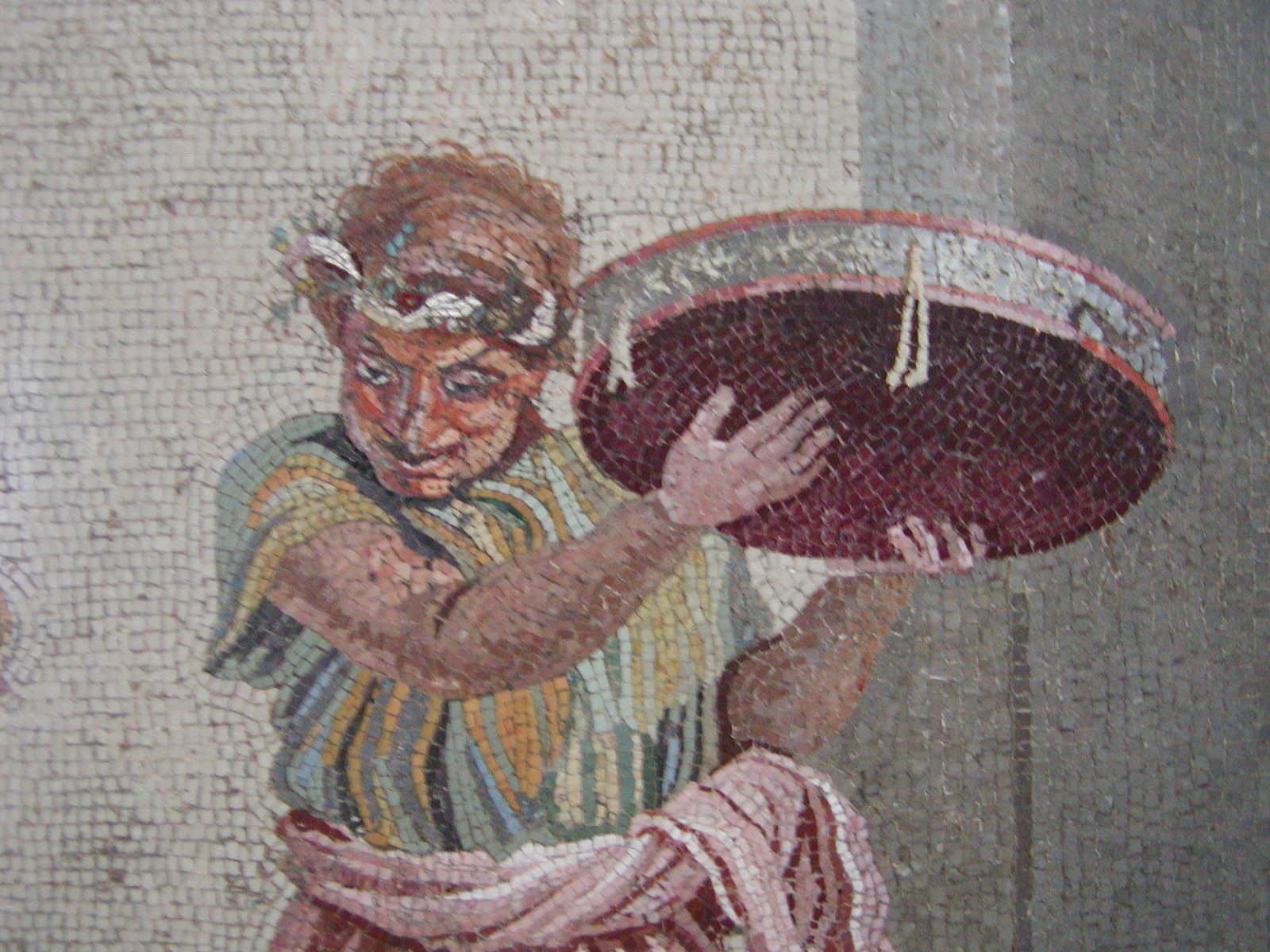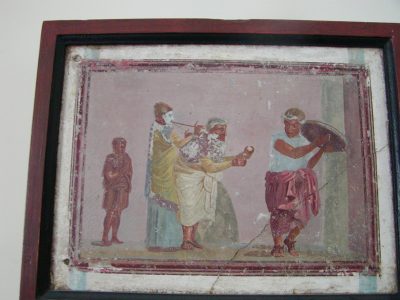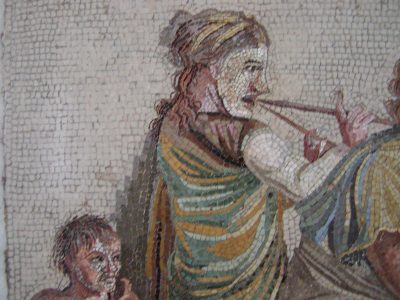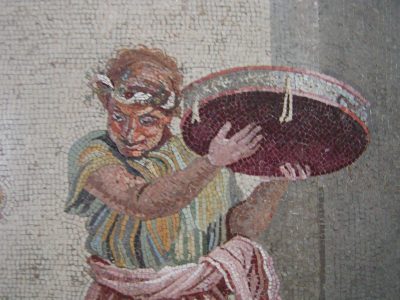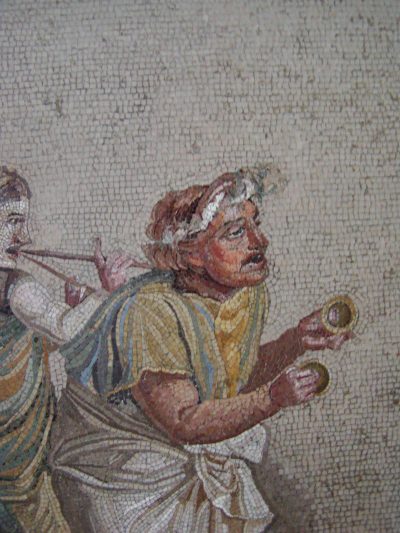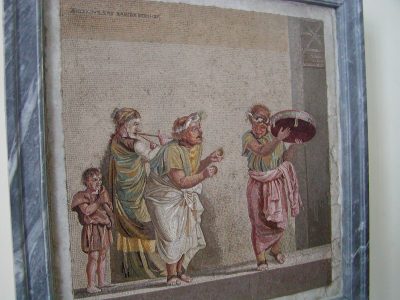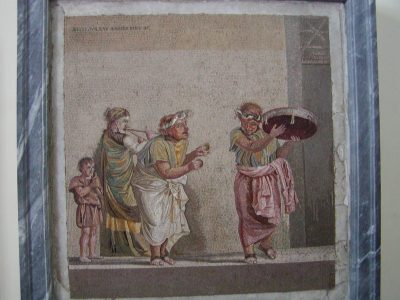This Mosaic with Street Musicians, signed by Dioskourides of Samos was found in the so-called Villa of Cicero near the ancient city of Pompeii.
The mosaic depicts an episode from a comedy, since the figures are wearing theatrical masks. The figures are playing musical instruments often connected with the cult of Cybele: the tambourine, small cymbals and the double flute.
This particular mosaic dates from the first century BCE, but the scene is known from the 3rd century BCE onward. It is found in paintings and mosaics until the 3rd century CE. The play is not immediately identifiable from this mosaic.
The mosaic is one of the finest surviving works from the ancient Roman world. It measures c. 41×43 cm and is made with minute tesserae, in a technique called opus vermiculatum. None of the stones are larger than 2.5mm and many of the finer details are made with tesserae smaller than 1 mm2. The mortar between the stones are painted to give better detail to the image.
Literature on Ancient Mosaics
Katherine M. D. Dunbabin: Mosaics of the Greek and Roman World, Cambridge University Press, 2001.
Roger Ling: Ancient Mosaics, Princeton University Press, 1998.
Photo gallery for "Mosaic with Street Musicians"
There are 6 photos in this gallery.

